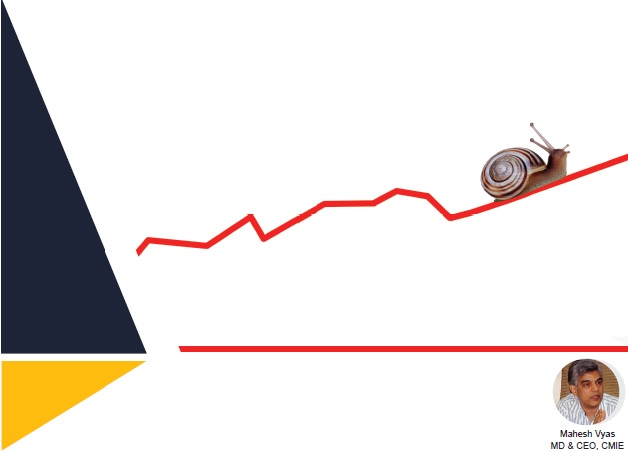By Mahesh Vyas
Industrial production growth slowed down and was lower than expectations in October 2017. The index of industrial production in October 2017 was 2.2 per cent higher than it was a year ago. This is lower than the average expectation, which was 3 per cent. Robust performance of the industrial sector in the second quarter of the current fiscal raised expectations of a sustained recovery in industry. In fact, expectations of a further recovery in GDP growth during third quarter hinges upon a pick up in industrial activity. In this respect, the October performance of IIP was disappointing.
While all three activity-segments of IIP saw slower growth in October compared to the preceding two months, it was the mining sector that saw the biggest fall – from 9.2 in August and 7.8 per cent in September to 0.2 per cent in October. In the end-use classification of IIP, it was consumer durables that dragged the IIP down.
To attribute the fall in IIP growth in October 2017 over October 2016 to Diwali would be stretching the impact of holidays. Four holidays fall around October – Gandhi Jayanti, Dusshera, Diwali and Muharram. In October 2016, two of these – Gandhi Jayanti and Diwali fell on Sundays. In October 2017, Muharram fell on a Sunday and Dassera was in September. So, the effective working days given a six-day working week is 24 in both years. The fall in the growth rate is therefore a sign of weakness in industrial growth.
Four quick observations from the IIP’s performance in October:
First, purely statistically, the 2.2 growth of October puts greater pressure for the IIP to perform better in November and December to ensure that the third quarter growth lives up to expectations. Else, we may have to tone down our expectations of growth in 2017-18. Note that according to the RBI’s survey of professional forecasters, IIP was expected to grow by 4.1 per cent in the October-December 2017 quarter; GVA of industry was expected to grow by 5.5 per cent and overall GVA by 6.7 per cent.
Second, it appears that there is some traction in capital goods and construction. Both performed much better – 6.8 per cent and 5.2 per cent, respectively. However, this is unlikely to be sustained unless consumption growth is robust. And, consumer goods industries performed poorly with a measly 0.8 per cent growth in October. One of the problems faced by industry which dampens its appetite for investments is excess capacity. Unless consumption rises robustly and thereby absorbs the excess capacity, growth in capital goods and construction will remain constrained.
The consumer durables index of October 2017 was 6.9 per cent lower than its level in October 2016. This is its biggest monthly fall in several years. Consumer durables has been posting y-o-y declines for almost a year now, since December 2016. This group includes automobiles and mobile phones that have been doing quite well. It is the rest of consumer durables that have been suffering a prolonged decline in output.
Consumer non-durables is dominated by medicines, sugar and toiletries. This group has been performing very well in recent months. Growth rates have been in the range of 7 to 10 per cent. In October the consumer durables index scaled a 7.7 per cent increase over its year-ago level.
Third, electricity and diesel the two heavy-weights in IIP are not reliable sources of growth. In October, we know that electricity grew by only 3 per cent y-o-y. Diesel production may be impacted by rising crude oil prices and the inability of fiscal space to keep prices on hold for long. Therefore, its growth in the coming months may be lower than the 3.4 per cent recorded during April-September 2017.
Finally, given the government’s hawkish stance on fiscal deficit and front-loading of government expenses so far, IIP will face reduced demand from the government sector in the remaining months of 2017-18. And, given RBI’s focus on keeping inflation in control which has already risen beyond its band of tolerance, the industrial sector will continue to face a less-than-obliging monetary policy.
The shock effects of demonetisation and GST are possibly behind us but, that is not enough for the industrial sector to log robust growth rates. We need consumer demand to pick up and then investment demand to kick-in quickly to get back to a thriving industrial sector.










